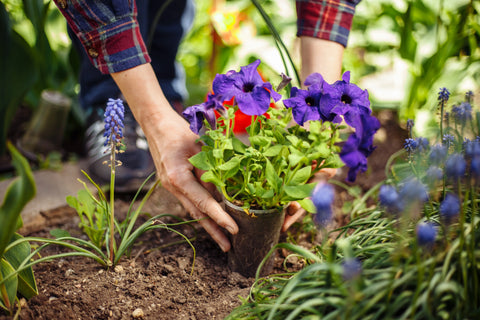Caring & Growing Alocasia Plants

Read our ultimate guide about taking care of Alocasia variety of plants and their growth process. Learn how to cultivate them properly indoors.
Alocasia Plants Variety
|
Alocasia plants originate from tropical woodlands, where they thrive on the jungle's floor. Species of Alocasia don't endure freezing winters or waterless, dry conditions. Most Alocasia plants are extensive yearly tropical species with gigantic leaves. Alocasia is a fair representation of tropical plants with stunning big arrowhead leaves and shiny greenery. Popular Alocasia varieties such as Alocasia Amazonica Polly and Alocasia Zebrina are excellent indoor plants since they blossom in warm, indirect sunlight and wet soil. Alocasia plants are flowering plants famous for their outstanding leaves and picturesque vegetation. Nevertheless, many Alocasia combinations have exceptional features. |
Guide for Alocasia Plants
|
Alocasia plants flourish in sunny indirect rays and a flexible potting compound with ideal drainage. Water the Alocasia plants repeatedly to uphold the barely wet plant roots and mist the leaves daily to improve humidity for wholesome greenery. Alocasia plants temperature scope is between 15°C – 28°C. |
Light Conditions |
Since Alocasia plants originally come from tropical forests, they need approximately the same conditions while growing as houseplants. They expand best in a sunny room with no direct daylight. Light's abundance facilitates healthy development and guarantees a vibrant color. Put the plant almost 1.5 m from the window or protect it with a light curtain in a south-facing space. These houseplants don't expand satisfactorily in dark rooms. Inadequate light will provoke a slower growth, and the leaves will fade until they die. |
Soil Mixture
|
It's highly advised to cultivate Alocasia plants in spongy soil with exceptional drainage. An excellent 'alocasia soil' compound would be equal amounts of mud, peat moss, and perlite. These potting components carry pleasing moistness and furnish the plant with fantastic drainage. Obtaining a proper soil mixture is a vital maintenance part for Alocasia plants. |
Watering Technique
|
Alocasia plants require constantly moistening adequately to uphold the soil evenly watery. The most helpful method to comprehend if your broad-leafed Alocasia requires water is viewing the top 1 – 2.5 cm dryness. Supply sufficiently with water to hold the soil equally moist consistently. Alocasia plants can die if the mud is way too wet, so watering small amounts frequently is the best method to maintain the ground wetness levels linear. Alocasia plants join a time of dormancy where practically their development nearly stops, and some foliage can break off. Therefore, it's recommended to solely moisten Alocasia plants in winter when the first 5 cm of mud stands waterless. |
Temperature Range
|
Alocasia plants blossom in warm spaces, so their ideal temperature would be 18°C up to 27°C for positive growth. As tropical plants, it's vital not to neglect their natural habitat temperatures, so do not go lower than 15°C in the cold season of your areas, wherever you might be cultivating them. Nonetheless, it's essential to store the potted plants out of direct rays and freezing breezes. |
Humidity Prerequisites
|
Alocasia plants demand 50-60% of humidity to blossom indoors. Generally, household air is excessively arid for these moisture-loving plants, so to facilitate their longevity within your residence, you should water the Alocasia leaves day-to-day, utilize a room humidifier, or set the pot on a rock tray half-filled with water to improve humidity conditions. |
Fertilization Role
|
Alocasia houseplant types benefit from supplementary fertilization in their growth period every two weeks within the spring to summer season. Utilize natural, organic fertilizers to support your Alocasia plant's healthy cultivation. During the watering process, leave it overnight in a pot to water out, and the chemicals vaporize to obtain the water up to room temperature. |
Repotting Process
|
Alocasia plants don't demand getting repottings repeatedly. These plants grow nicely in jars where they are narrowly rootbound. Occasionally repotting an Alocasia plant can disturb the plant and force sagging growth for a bit. To perfectly conclude this process for an Alocasia plant, pick a bigger pot than the existing one and use a suitable mud mixture. Remember to review the roots for indications of decay. If you have a big Alocasia plant, repotting is ideal for multiplying a new one. |
Multiplying Method
|
Alocasia plants are multiplied by root division or splitting the branches. Occasionally, you will notice tiny 'baby' plants evolving close to the plant's ground. You can clip them and cultivate them in a new jar. When multiplying Alocasia plants, it's essential to maintain them in warm and humid conditions. |
Pruning Alocasias
|
It's rarely needed to prune Alocasia plants. Elder leaves turn brown and die while, at the same time, fresh leaves arise on the plant. Nevertheless, you can cut yellowing or ruined leaves to enhance the plant's look. If you detect symptoms of overwatering, keep off watering until 2.5 – 5 cm of mud. If your Alocasia still faces difficulties getting back in life, you can repot it in a new mixture. Trim any dead features before replanting. |


